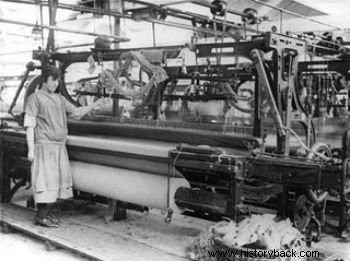The English Industrial Revolution began as a result of a series of economic, social and political factors that occurred in England in the second half of the eighteenth century .
Causes of the English Industrial Revolution
England was a unified country with a relatively stable political situation, free from tariffs and with a well-established insurance system and banking infrastructure.
In the 18th century it became a dominant international economic power and accumulated large sums of capital. In addition, the large number of natural ports and navigable rivers, many connected by new canals, meant that domestic and international consumption were easily intertwined.
The existence of labor abundant and cheap was also important for the development of the industry. Since the beginning of the 18th century, with the improvement of agricultural production, there has been a drop in mortality rates.
At the same time, large numbers of people were being expelled from the countryside, due to the appropriation of land by powerful rural landowners, and they were migrating to the city.
The English bourgeoisie can still count on the growing colonial empire. In the second half of the 18th century, after beating the French, England gained naval hegemony. At that time, commercial activities commanded the pace of production.
Consequences of the Industrial Revolution in England
Manufacturing and Industry
In England, at the beginning of the 18th century, several forms of industrial work coexisted. The corporations, which carried out artisanal work, were already in the process of extinction.
The rural or domestic industry, which operated in the countryside, where peasant families spun, wove and dyed, initially for the needs of the family, producing wool fabrics with spinning wheels and wooden looms.
With the growth of commerce, they started to produce for the market, emerging the supplier of raw material that received the finished product to be commercialized.
And also the cotton spinning and weaving factories, which although they did not have machines, were similar to factories, bringing together workers in one place, producing with a certain division of labor.
Machines and factories
In England, in the second half of the 18th century, several inventions revolutionized production. The first branch of industry to be mechanized was cotton spinning and weaving. In 1767, English inventor James Hargreaves created the spinning machine , built in wood, used by rural and domestic industry.
In 1769, Richard Arkwright created the water loom , later perfected and used in the textile industry. That same year, James Watt creates the steam engine .
The new energy began to be used in spinning and weaving machines. It was in the manufacture of fabrics that the most important technical advances took place at the beginning of industrialization.
In 1779 Samuel Cropton improved the power loom and in 1785 Edmund Cartwright invented the power loom, capable of being operated by unskilled labor, which marked the end of hand weaving.
To increase the resistance of the machines, wood was replaced by metal, which stimulated the advancement of the steel industry. England had an abundance of iron and coal, fundamental raw materials for the construction of machines and for the production of energy. Coal production has increased due to steam pumps and other technological innovations.
In the 1880s, the emergence of electricity as a source of energy, pioneered by Michael Faraday, heralded a rival that would eventually replace steam. The development of standardized and accurate machine tools was another important aspect of the Industrial Revolution.
See also:Industrial Revolution:what was it (summary)The proletariat

The English Industrial Revolution gave rise to a working class, which was characterized by earning low wages and working hours that reached 16 hours. The workers who used to own the looms and spinning wheels were now subject to the capitalists (owners of the means of production).
One of the main consequences of the Industrial Revolution was the growth of cities. In 1800, London had a population of 1 million.
At that time, industrial and urban development shifted to the north of the country. During the Victorian Era, Manchester was invaded by a huge mass of workers working in miserable conditions. Women and children filled the factories, with lower wages than men.
Working conditions were precarious and put workers' lives and health at risk, leading some to rebel against machines and factories. The owners and the government organized a military defense. The increase in workers' struggles forced the creation of a minimum subsistence for the unemployed (Speenhamland Law). A tax paid by the community defrayed the expenses.
In 1811, the Luddite movement broke out. , name derived from Lend Ludlam, a character created to characterize the destruction of machines by workers.
In the 1830s, the Chartist movement claimed the vote for all English citizens. Associations were created that paid contributions to pay for the burial of a dead companion. Then came the trade union (unions), which prohibited child labor, eight-hour work and the right to strike.
Industrial Revolution - All MatterWant to know everything about the Industrial Revolution ? Read the texts:
- Phases of the Industrial Revolution
- First Industrial Revolution
- Second Industrial Revolution
- Questions about the Industrial Revolution
Bibliographic References
Bahamonde, Miguel &Villares, Ramón - The contemporary world, acronyms XIX and XX. 2008. Ed. Taurus:Madrid.
Schlutz, Helga - Economic history of Europe, 1500-1800. Craftsmen, merchants and bankers. 2001. Siglo XXI Publishers:Madrid.
